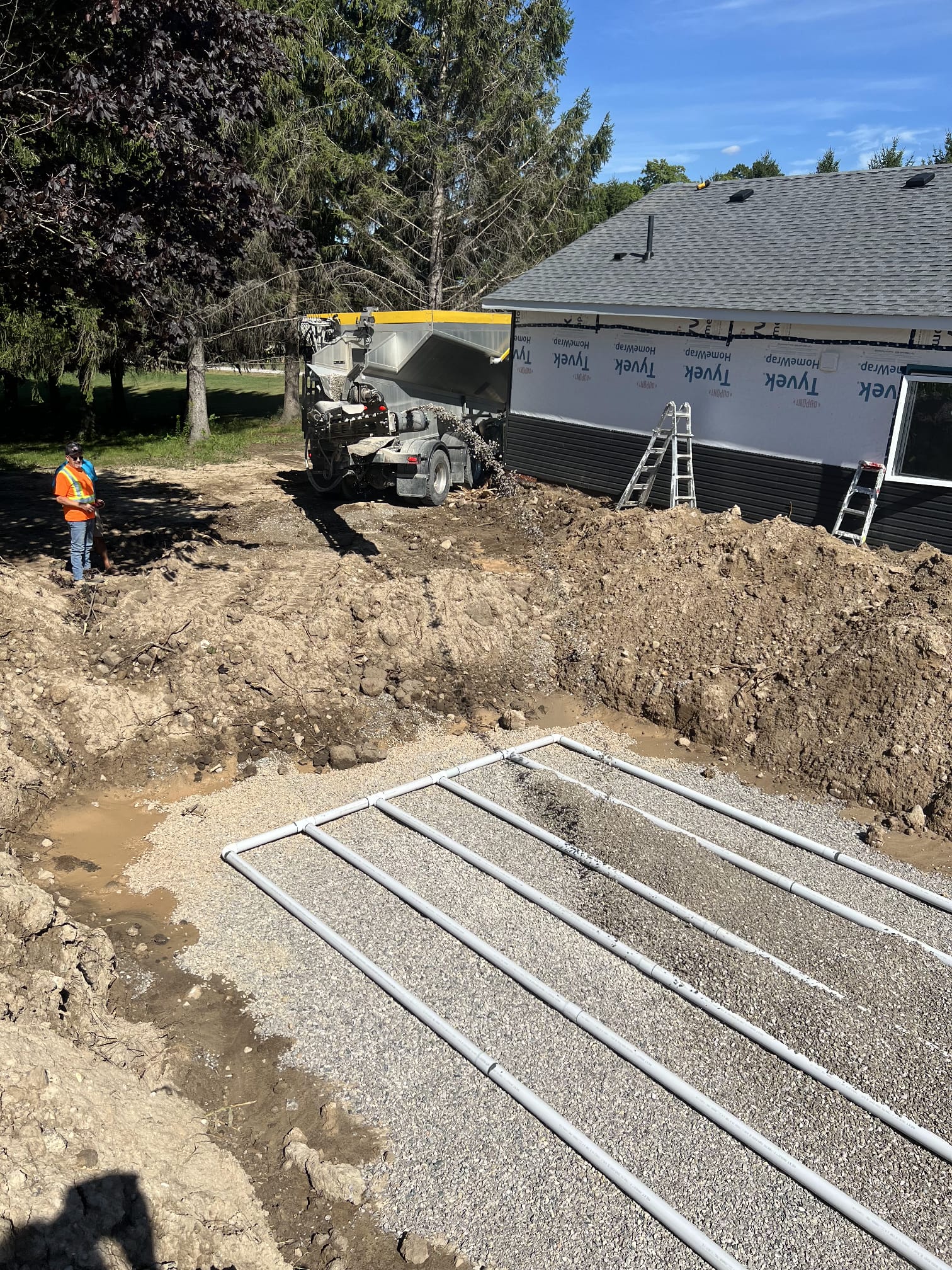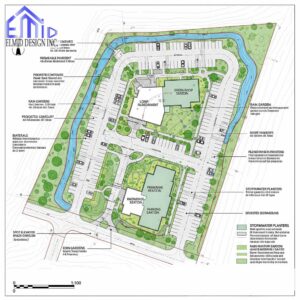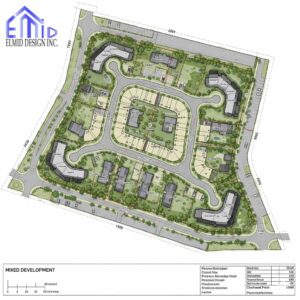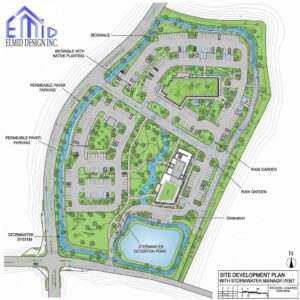Septic design Ajax is a vital process for homeowners and property developers who live or build in areas not connected to municipal sewers. It determines how wastewater is safely collected, treated, and dispersed on-site. Ajax, Ontario, has unique soil and groundwater conditions that require properly engineered septic solutions. Poor design or unqualified work can lead to system failure, contamination, and costly repairs. That’s why working with professional engineers, such as those at Elmid Design Inc—an engineering firm authorized by Professional Engineers Ontario (PEO)—ensures every septic design meets strict provincial standards and protects both the environment and public health.
Key Takeaways
Proper septic design Ajax involves engineering precision, site evaluation, regulatory compliance, and expert execution. A well-designed system keeps your property functional, avoids legal problems, and ensures environmental safety.
Understanding Septic Design in Ajax
Septic design Ajax refers to creating an engineered plan that manages household or building wastewater through underground treatment and dispersal systems. It involves assessing soil, topography, water table, and site access to develop an efficient, long-lasting septic solution. Ajax combines urban and semi-rural areas, meaning some properties rely on private septic systems rather than municipal connections. The goal of septic design is to ensure wastewater is filtered and absorbed safely without polluting groundwater. A proper design includes the layout of tanks, piping, leaching beds, and reserve areas. Professional engineers use these elements to build systems that meet both performance and regulatory standards.
Regulatory Framework for Septic Systems in Ajax
All septic design Ajax projects must comply with Ontario’s Building Code, specifically Part 8, which governs small on-site sewage systems. This code outlines requirements for design, materials, capacity, and performance standards. In Ajax, septic permits are typically reviewed and approved through the Durham Region Health Department, ensuring the design meets health and environmental safety standards. The regulations define key parameters like soil absorption rates, minimum setbacks from wells and property lines, and specific tank sizing rules. A professional engineer or qualified designer reviews the site data and produces stamped drawings for submission. Compliance with these rules not only secures permit approval but also ensures that the system operates efficiently for decades.
Site Evaluation and Soil Testing
Before starting any septic design Ajax, site evaluation is the first and most crucial step. This process identifies whether the property can support a septic system and what type of design is suitable. Engineers perform soil testing, often referred to as percolation or “T-time” testing, to measure how quickly the soil absorbs water. A slow absorption rate might require a larger leaching bed or alternative treatment system, while a fast rate can risk groundwater contamination. Other factors considered include lot slope, depth to bedrock, seasonal water table level, and proximity to wells or surface water. These tests help ensure the chosen system design can effectively treat wastewater under local soil conditions.
Sizing the Septic System
The success of any septic design Ajax depends on accurate system sizing. Proper sizing ensures that the tank and leaching bed can handle the daily wastewater flow without overloading. The Ontario Building Code specifies design flows based on the number of bedrooms, bathrooms, and plumbing fixtures. Engineers use these figures to determine the minimum tank capacity and the total area needed for the leaching bed. For example, a typical three-bedroom home in Ajax might require a 3,600-litre tank and a specific bed size calculated from percolation test results. Undersized systems often lead to backups and premature failure, while oversized ones increase installation costs unnecessarily.
Types of Septic Systems in Ajax
There are several types of systems used in septic design Ajax, each suited to different site conditions. The most common is the conventional gravity-fed system, where effluent flows from the tank to the leaching bed naturally. However, some properties in Ajax have challenging soil conditions or high water tables that demand advanced or alternative systems. These include pressure distribution systems, raised filter beds, and tertiary treatment units that enhance effluent quality before discharge. Choosing the right system depends on the soil test results and lot configuration. Professional engineers evaluate all options to ensure optimal performance and long-term reliability while adhering to environmental regulations.
Engineering and Professional Oversight
A well-executed septic design Ajax requires engineering expertise and licensed oversight. Elmid Design Inc, holding a certificate of authorization from Professional Engineers Ontario, provides assurance that every design follows technical standards and regulatory compliance. Their engineers analyze field data, develop detailed design drawings, and ensure that the system functions efficiently over time. This professional involvement adds a layer of accountability and ensures the system performs safely and reliably. It also satisfies municipal and health department requirements for professional certification, reducing the risk of rejections or design errors. Using a qualified engineering firm demonstrates a commitment to both environmental protection and responsible property development in Ajax.
Documentation and Submission Requirements
To obtain approval for septic design Ajax, detailed documentation must accompany every application. Engineers prepare scaled drawings showing the house footprint, proposed tank and leaching bed locations, elevations, and distances to property boundaries or wells. A design report outlines the calculation methods, soil test results, and performance assumptions. These documents are submitted to the local health authority for technical review. Any missing data or inconsistencies can cause delays or permit denials, so professional preparation is crucial. Once approved, the permit allows construction to proceed legally and ensures the installation matches the engineered design.
Site-Specific Challenges in Ajax
Ajax’s geography and soil composition present unique challenges for septic system design. Parts of Ajax have clay soils that limit infiltration, while others have sandy or loamy soils with faster drainage. Some rural areas experience seasonal water table fluctuations, requiring raised bed or tertiary systems to prevent contamination. These conditions make septic design Ajax a specialized process that cannot rely on one-size-fits-all solutions. A professional engineer evaluates every property individually, adapting the design to match site-specific conditions. This attention to detail ensures the septic system remains functional and compliant for many years.
Importance of Using Licensed Engineers
Hiring a licensed professional engineer for septic design Ajax provides more than just technical accuracy—it ensures regulatory compliance and environmental protection. Licensed engineers are accountable to Professional Engineers Ontario, which maintains strict ethical and professional standards. They also carry professional liability insurance and operate under a certificate of authorization, ensuring protection for clients. This means any septic system designed under their supervision meets code requirements, health regulations, and environmental safety measures. Homeowners who use licensed professionals also gain smoother permit approvals and greater confidence in the quality of their system.
Environmental and Public Health Considerations
Septic design Ajax directly affects groundwater and environmental safety. A well-designed system prevents sewage from contaminating local wells, streams, and soil. Ajax relies on both municipal and private water sources, so preventing contamination is essential for public health. Engineers must consider effluent quality, hydraulic loading, and soil filtration when developing each design. Proper treatment protects not only the property owner but also nearby residents and ecosystems. Sustainable septic design contributes to a cleaner environment and aligns with local goals for water conservation and pollution prevention.
Why Homeowners Choose Elmid Design Inc
Elmid Design Inc has become a trusted name for septic design Ajax because of its commitment to engineering integrity and regulatory compliance. The company’s team of professional engineers and designers combines technical expertise with local knowledge of Ajax’s soil conditions and municipal procedures. Their certificate of authorization from Professional Engineers Ontario ensures clients receive credible and legally recognized services. By choosing Elmid Design Inc, homeowners gain peace of mind knowing their septic system is designed for efficiency, safety, and durability. The firm’s reputation for quality work reflects the principles of Expertise, Authority, and Trust that Google values in professional content and service providers.
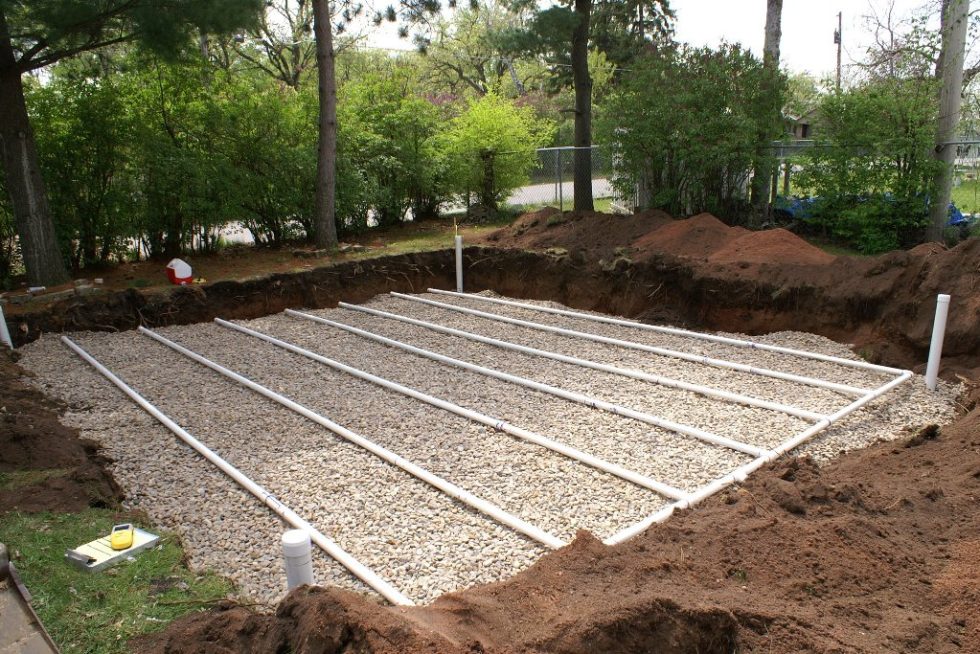
Drawing, Submission, and Permitting Process
The drawing and permitting process for septic design Ajax requires technical precision and compliance with local regulations. Engineers prepare scaled site plans showing septic tank locations, leaching beds, and setbacks from wells and property lines. Each drawing must follow Ontario Building Code Part 8 requirements. Once the design is complete, it is submitted to the local health authority in Durham Region for approval. The approval process verifies that the design meets all performance standards and environmental protection measures. In Ajax, accurate documentation shortens approval timelines and ensures that construction can begin without delays. Submitting an engineered design stamped by a licensed professional reinforces compliance and trust with regulatory agencies.
Installation and Construction Considerations
Installation is where septic design Ajax moves from paper to reality. A professional installation team follows the engineer’s drawings to position tanks, trenches, and pipes according to exact specifications. Excavation depth, slope, and soil compaction all influence the system’s long-term efficiency. Even small deviations can reduce performance or cause early failure. Engineers often perform site visits during installation to confirm accuracy and protect design integrity. Following approved plans ensures that the septic system performs safely and meets provincial standards. Proper construction also prevents costly rework or environmental hazards, making precision during this phase critical for long-term success.
Inspection and Final Approval
After construction, the septic design Ajax must undergo inspection by the regional health department. Inspectors verify that the installation matches approved plans and that materials meet required standards. They check for correct tank sizing, pipe slopes, and leaching bed configurations. This inspection ensures the system will operate safely and efficiently before it is buried and commissioned. Only after this step does the authority issue final approval, allowing the homeowner to begin using the system. This stage confirms that every component of the design has been implemented correctly and that the property now complies with health and environmental regulations.
Maintenance and Long-Term Performance
Long-term performance depends on proper maintenance of the septic design Ajax. A well-maintained system can last decades without failure. Regular tank pumping prevents solids from clogging the leaching bed. Homeowners should also conserve water to avoid overloading the system. Visual inspections every few years help detect leaks, cracks, or blockages early. In Ajax, seasonal changes can affect soil moisture, making regular checks even more important. A professionally designed and maintained system protects property value, reduces environmental impact, and minimizes repair costs. Neglecting maintenance often leads to costly repairs and environmental contamination that could have been easily avoided.
Cost Factors and Budget Planning
The cost of septic design Ajax varies depending on property conditions, soil type, and system complexity. Simple gravity systems usually cost less, while advanced treatment systems require more engineering and specialized materials. Factors such as tank size, leaching bed area, and terrain also influence pricing. Homeowners should plan for both design and construction expenses, along with permit fees. Although using a professional engineer increases initial cost slightly, it saves money long-term by preventing costly errors or system failures. Transparent pricing from reputable firms ensures clients understand what they are paying for and helps avoid unexpected financial surprises during installation.
Common Mistakes in Septic Design
Several common mistakes can compromise the performance of septic design Ajax. The most frequent issue is inadequate site evaluation, which leads to incorrect system sizing. Another mistake is hiring unqualified designers who fail to meet code requirements or submit incomplete documentation. Poor installation practices, such as improper pipe slopes or shallow trench depths, can cause immediate system problems. Ignoring regular maintenance also shortens the lifespan of the system. Avoiding these mistakes requires professional oversight from licensed engineers who understand both technical requirements and local soil conditions. Correct design and installation ensure lasting reliability and regulatory compliance.
Environmental Sustainability and Innovation
Modern septic design Ajax embraces innovation to improve environmental sustainability. Engineers now use advanced filtration units and tertiary treatment systems that reduce nitrogen and phosphorus discharge. These systems protect groundwater and surface water from contamination. Energy-efficient pumps and monitoring sensors also enhance performance by optimizing system operation and detecting issues early. Sustainable septic designs align with Ontario’s environmental protection goals while delivering long-term cost savings for property owners. In Ajax, growing environmental awareness encourages the adoption of these advanced solutions, making septic systems safer, smarter, and more efficient than ever before.
Future Trends in Septic Engineering
The future of septic design Ajax is moving toward smarter and more integrated technology. Remote monitoring systems allow homeowners and engineers to track performance data in real time. These innovations help identify early warning signs before they become serious problems. Sustainable materials and modular components are also gaining popularity, allowing systems to adapt to changing household demands. Advances in soil treatment and compact filtration units make septic systems more suitable for small urban lots. As Ajax continues to grow, modern septic engineering ensures that wastewater management remains efficient, safe, and environmentally responsible for future generations.
Importance of Compliance and Professional Oversight
Compliance plays a vital role in septic design Ajax. Every stage of design and construction must follow the Ontario Building Code, local bylaws, and environmental standards. Using a professional engineering firm ensures that all technical and legal requirements are satisfied. Elmid Design Inc, with its certificate of authorization from Professional Engineers Ontario, represents the highest standard of professional accountability and technical precision. Their engineering oversight ensures that the final system not only meets regulations but also operates safely for years. Compliance protects homeowners, builders, and the community from liability and environmental risks.
Case Example of a Residential Project
A recent residential septic design Ajax project demonstrates how professional design delivers reliable results. The property was located on a small lot with clay soil and a high water table. Engineers conducted a detailed soil analysis and determined that a raised bed system with tertiary treatment was required. The design met all setback and environmental requirements, gaining approval without revision. Installation followed the engineered plan precisely, and the system has since performed flawlessly. This example illustrates the value of professional expertise, accurate site assessment, and regulatory compliance in achieving successful outcomes.
Why Engineering Expertise Matters
Engineering expertise ensures that septic design Ajax achieves both performance and durability. A professional engineer analyzes each factor affecting system operation, from soil permeability to hydraulic load. They apply scientific principles and local experience to create a design that performs under all conditions. Licensed engineers provide stamped drawings that verify professional accountability and technical accuracy. Their knowledge helps prevent system failure, protects groundwater, and ensures that homeowners receive a long-lasting solution. Choosing a professional engineering firm means choosing safety, reliability, and regulatory confidence for every septic project in Ajax.
Trust and Professionalism in Septic Design
Trust is the foundation of any septic design Ajax project. Homeowners rely on engineers to design systems that safeguard their property and community. Elmid Design Inc has earned that trust through consistent professionalism, regulatory compliance, and engineering excellence. Their commitment to client satisfaction and environmental responsibility defines the company’s reputation. Each design is carefully reviewed and approved under PEO authorization, reflecting the highest standard of engineering practice. This level of professionalism ensures homeowners in Ajax receive septic systems that perform efficiently, protect the environment, and comply with all local and provincial regulations.
Advanced Engineering Techniques in Septic Design Ajax
Advanced engineering techniques have transformed how septic design Ajax is approached today. Engineers now use computer-based hydraulic modeling and 3D terrain mapping to create accurate system layouts. These technologies help predict effluent movement and identify potential drainage issues before installation begins. Soil permeability tests and groundwater monitoring data are digitally analyzed to improve precision. This modern approach reduces design errors and ensures each system performs at peak efficiency. For Ajax homeowners, advanced design methods mean systems that require less maintenance and last longer. By combining technology with engineering expertise, professionals deliver safer, more sustainable wastewater solutions that meet all regulatory standards.
Soil Variability and Local Adaptations
Soil variability in Ajax requires engineers to adapt every septic design to local conditions. Some areas have heavy clay soils that drain poorly, while others contain sandy layers that absorb water too quickly. Engineers balance these differences by adjusting leaching bed size, depth, and type of treatment system used. They also consider seasonal groundwater fluctuations and frost depth, which can affect performance. Adapting the design to match soil characteristics ensures that effluent is treated safely before reaching the groundwater. This tailored approach reflects the importance of local expertise in achieving long-term success for every septic system in Ajax.
Water Table Management in Septic Design
Managing groundwater levels is a key challenge in septic design Ajax. A high water table can cause contamination risks if the system is not properly elevated or sealed. Engineers use site testing to determine safe separation distances between the leaching bed and groundwater. When necessary, raised bed or pressure distribution systems are installed to protect the environment. Effective water table management prevents system overload and ensures reliable operation throughout the year. In Ajax’s varying terrain, this careful attention to water levels is essential for both performance and environmental protection. Professional engineers use scientific methods to achieve this balance safely and effectively.
Integration of Tertiary Treatment Systems
Tertiary treatment systems play an important role in modern septic design Ajax. These advanced systems provide a higher level of wastewater purification through aerobic treatment or filtration units. They reduce contaminants like nitrogen, phosphorus, and organic matter before effluent enters the soil. Ajax properties with limited lot space or sensitive groundwater areas benefit from this technology. Engineers design tertiary systems that meet strict performance standards while fitting within property constraints. The integration of these systems demonstrates how engineering innovation supports sustainability, public health, and environmental compliance. It also allows properties in challenging areas to meet modern building requirements.
Importance of System Monitoring
Monitoring is critical to maintaining the long-term performance of any septic design Ajax. Engineers now include monitoring ports, sensors, and access chambers that make regular inspection easier. Routine monitoring identifies early signs of malfunction, such as slow drainage or high water levels in the leaching bed. Detecting these issues early prevents expensive repairs and environmental hazards. Professional oversight ensures that the system continues operating within design limits. Consistent monitoring and maintenance extend the system’s lifespan and help homeowners avoid unexpected problems. This proactive approach reflects the engineering focus on safety, reliability, and accountability in every Ajax project.
Climate and Seasonal Impacts
Ajax experiences variable climate conditions that directly influence septic system design and performance. Heavy rainfall, snowmelt, and freezing temperatures can alter soil absorption rates and groundwater levels. Engineers factor these variations into every septic design Ajax to ensure year-round reliability. Proper insulation, slope adjustments, and drainage planning prevent seasonal performance issues. Designs that consider climate are more resilient and sustainable over time. Accounting for seasonal impacts ensures the system maintains safe treatment levels in both wet and dry conditions. This environmental adaptability is part of what makes professional engineering design essential in Ontario’s variable climate.
The Role of Homeowners in System Longevity
Homeowners play a vital role in extending the life of their septic design Ajax. While professional engineers handle design and permitting, ongoing care depends on responsible use. Homeowners should avoid disposing of harsh chemicals, excess grease, or non-biodegradable materials down the drain. Water conservation also helps prevent overloading the system. Scheduling routine inspections and pump-outs ensures that the tank and bed remain functional. Awareness and proper care protect both the property and the surrounding environment. In Ajax, where groundwater quality is a community concern, responsible maintenance supports the town’s environmental goals and protects private investments.
Choosing the Right Engineering Firm
Selecting the right firm for septic design Ajax determines the success and reliability of the entire project. Homeowners should choose a company that combines technical knowledge, local experience, and professional certification. Elmid Design Inc exemplifies this standard through its authorization from Professional Engineers Ontario. Their team brings extensive experience in designing septic systems that meet all building code and environmental requirements. Working with a certified engineering firm ensures accurate testing, compliant documentation, and efficient approval. The result is a septic system that performs reliably, protects groundwater, and meets every legal standard in Ajax.
Trust, Expertise, and Professional Accountability
Trust and expertise form the foundation of professional septic design Ajax. Homeowners rely on engineers who understand local soil conditions, regulatory frameworks, and technical requirements. Firms like Elmid Design Inc maintain professional accountability through their PEO authorization, demonstrating full compliance with provincial standards. Their engineering process ensures every design is technically sound, environmentally responsible, and approved by authorities. This professional accountability provides clients with peace of mind and establishes long-term credibility within the community. In Ajax, where development continues to grow, trust in engineering expertise safeguards both property value and environmental integrity.
Future-Proofing Septic Systems
Future-proofing is an emerging focus in septic design Ajax. Engineers now design systems that can be upgraded or expanded as property needs change. Modular tanks and adaptive treatment technologies make future adjustments easier without major excavation. This flexibility is especially important for growing families or businesses that may increase water usage. Engineers also consider potential regulatory updates when designing systems today. Creating adaptable designs reduces long-term costs and keeps systems compliant with evolving standards. Future-proof septic systems demonstrate foresight, sustainability, and the professional engineering approach that defines Elmid Design Inc’s work in Ajax.
Sustainable Growth and Community Impact
Sustainable growth in Ajax depends on responsible wastewater management. Every septic design Ajax contributes to maintaining water quality and supporting local development. Professionally engineered systems allow rural and semi-urban areas to grow safely without harming natural resources. By reducing pollution and ensuring compliance with building standards, these systems support both private property owners and the wider community. Sustainable septic design reflects a balance between progress and environmental care. It also highlights how engineering excellence directly contributes to public well-being and long-term regional health.
Frequently Asked Questions
What permits are required for septic design Ajax?
All septic system installations in Ajax require approval under the Ontario Building Code, Part 8. The local health department reviews and approves design drawings and reports before construction can begin.
Can homeowners design their own septic systems in Ajax?
Only licensed professional engineers or designers with appropriate Building Code Identification Numbers are authorized to prepare and submit septic designs in Ontario. Homeowners must hire qualified professionals for compliance.
How long does a septic system last in Ajax?
A properly designed and maintained septic system can last more than twenty-five years. Lifespan depends on soil type, maintenance frequency, and water usage habits.
What are common signs of septic system failure?
Warning signs include slow drains, strong odors, standing water over the bed area, or sewage backups. Immediate inspection and maintenance should follow any of these symptoms.
Why choose Elmid Design Inc for septic design Ajax?
Elmid Design Inc provides licensed engineering services backed by authorization from Professional Engineers Ontario. Their local experience, technical expertise, and compliance with regulations ensure reliable and sustainable septic systems tailored for Ajax.

Professional Engineering Excellence in Ontario
Elmid Design Inc is a trusted engineering firm in Ontario specializing in septic design Ajax and other civil and environmental engineering services. With a certificate of authorization from Professional Engineers Ontario, the company delivers precise, regulation-compliant designs that protect both property and the environment. Its team of licensed engineers combines technical expertise, local knowledge, and strong ethical standards to ensure every project meets the highest industry expectations. Homeowners and developers across Ajax rely on Elmid Design Inc for dependable, efficient, and sustainable engineering solutions that demonstrate true professionalism and long-term value.
Geographic Locations That We Service:
Our Licensed Professional Engineers specializing in Engineered Site Grading Plans offer the best-engineered site grading plan, lot grading and erosion plan, and drainage plan to obtain site plan approval and building permits in Ontario, including a wide range of municipalities. Each area boasts unique features and requirements, making our tailored approach essential for success.
Toronto and Surrounding Areas
In the vibrant heart of Ontario, we service Toronto (City of Toronto) and surrounding areas. Additionally, we cover Oshawa (City of Oshawa), Pickering (City of Pickering), and Clarington (Municipality of Clarington). Furthermore, our expertise extends to Ajax (Town of Ajax), Whitby (Town of Whitby), Brock (Township of Brock), Scugog (Township of Scugog and Uxbridge (Township of Uxbridge).
Halton Region
Moving to the Halton Region, our services encompass Burlington (City of Burlington) and Halton Hills (Town of Halton Hills). Also included are Milton (Town of Milton) and Oakville (Town of Oakville).
Peel Region
In the Peel Region, we provide services in Brampton (City of Brampton), Mississauga (City of Mississauga), and Caledon (Town of Caledon).
York Region
Our services in the York Region cover Vaughan (City of Vaughan), Aurora (Town of Aurora), and East Gwillimbury (Town of East Gwillimbury). We also cater to Georgina (Town of Georgina), Markham (City of Markham), Newmarket (Town of Newmarket), Richmond Hill (City of Richmond Hill), Whitchurch-Stouffville (Town of Whitchurch-Stouffville), King (Township of King), and Bradford-West Gwillimbury (Town of Bradford-West Gwillimbury). Each municipality here offers a distinct setting, requiring our specialized approach.
Other Southern Ontario Cities and Towns
We also serve many other cities and towns in Southern Ontario. These include Hamilton (City of Hamilton), St. Catharines (City of St. Catharines), Niagara on the Lake (Town of Niagara on the Lake), Brant (County of Brant), Cambridge (City of Cambridge), Kitchener (City of Kitchener), Waterloo (City of Waterloo), and Woodstock (City of Woodstock). Furthermore, we operate in Guelph (City of Guelph), Centre Wellington (Township of Centre Wellington), Shelburne (Town of Shelburne), Orangeville (Town of Orangeville), New Tecumseth (Town of New Tecumseth), Essa (Town of Essa), Collingwood (Town of Collingwood), Wasaga Beach (Town of Wasaga Beach), Barrie (City of Barrie), Midland (Town of Midland), Orillia (City of Orillia), Ramara (Town of Ramara), Minden Hills (Town of Minden Hills), North Kawartha (Town of North Kawartha), Kawartha Lakes (City of Kawartha Lakes), Peterborough (City of Peterborough), Selwyn (Town of Selwyn), and Brighton (Municipality of Brighton).

